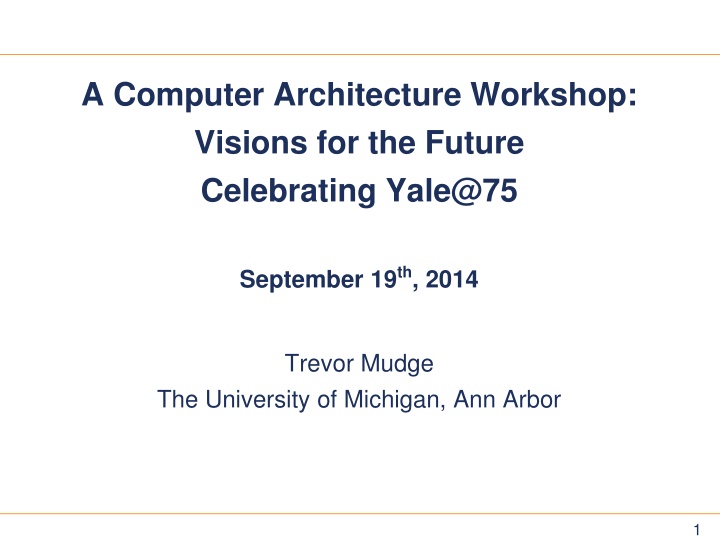
Future of Computer Architecture: Innovative Perspectives and Challenges
Explore the future of computer architecture and the need for unconventional thinking to break free from traditional constraints. From proposing new abstraction models to reflecting on past advancements like Dennard Scaling, this workshop offers a vision for the evolution of digital systems.
Download Presentation

Please find below an Image/Link to download the presentation.
The content on the website is provided AS IS for your information and personal use only. It may not be sold, licensed, or shared on other websites without obtaining consent from the author. If you encounter any issues during the download, it is possible that the publisher has removed the file from their server.
You are allowed to download the files provided on this website for personal or commercial use, subject to the condition that they are used lawfully. All files are the property of their respective owners.
The content on the website is provided AS IS for your information and personal use only. It may not be sold, licensed, or shared on other websites without obtaining consent from the author.
E N D
Presentation Transcript
A Computer Architecture Workshop: Visions for the Future Celebrating Yale@75 September 19th, 2014 Trevor Mudge The University of Michigan, Ann Arbor 1 1 1
Visions for the Future? We need to think out-of-the-box Get back to the basics of computing Do something radical Get rid of the von Neumann straight jacket Our abstractions don t expose the basic logical fabic I propose the following: Let s take a leaf from toys LEGO There s a solution that s been with us a long time.... It s a basic building block that digital systems can be constructed from No not a NAND gate It has a higher level of abstraction 2 2 2
Golden AgeDennard Scaling Worked About every 2 years we got: 2 area 40% increase in frequency 50% reduction in power No change in power density 4 4 4 4
Turn of the Century Cracks appeared First crack: frequency scaling became a problem Vdd got stuck & power density started to creep up Clock frequency could no longer be a selling point Core count was the new metric Later: Each new tech node no longer showed power and frequency scaling Node numbers became symbolic names still followed the 1/ 2 sequence Only area shrank with new nodes 5 5 5
What About Cost? Two Views Intel Everyone else cost per transistor reached a minimum at 28 nm 6 6 6
Where Does That Leave Us No new technology that looks promising Cheap Reliable Support density Can t see much beyond 7 years But where s the capital investment? From a computer architect s viewpoint Fast complex cores have been explored Multiple cores are being explore Unlikely to reach large numbers except for data centers / HPC Application domain specific architectures look promising Gpu led the way Only so many applications that warrant specialization 7 7 7
Some Opportunities Memory new interesting technologies 3D monolithic FLASH Various NV-memory technologies Advanced packaging 3D die stacking Interposers Longer time horizon 3D monolithic ICs see FLASH High Bandwidth Memory 8 8 8
FIN 9 9 9






















